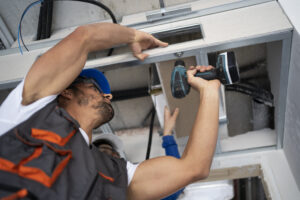Real-Time Hazard Reporting: Why It’s a Game-Changer for Workplace Safety
Hazard reporting is a critical step in protecting your business. It keeps employees safer, ensures regulatory compliance, enhances your workplace safety culture, and reduces both costs and liability risks. But today, speed matters more than ever.
Real-time hazard reporting offers a faster, more actionable solution, allowing you to identify and address concerns as they happen. By providing instant visibility, real-time reporting empowers safety personnel to intervene sooner, minimizing the impact of incidents and strengthening overall workplace resilience.
To be successful, businesses must shift from reactive approaches to proactive safety practices. Fortunately, with the right technology, implementing real-time hazard reporting is easier than ever.
The Problem with Delayed Reporting
While traditional reporting methods have been essential in the past, they simply can’t keep up with the demands of today’s fast-paced and highly regulated environments. Common challenges include:
- Paper-based systems that lack digital connectivity, limiting not only access from multiple locations but also requiring extensive human interaction. Paper-based systems are prone to inefficiencies, human-introduced errors, and misinterpretation of handwritten information.
- Communication breakdowns are common due to the lack of real-time updates and insights, leading to poor outcomes or no action at all.
- Dangerous time lags when hazards aren’t addressed immediately. Small issues, if unaddressed, can escalate into costly, preventable incidents
These issues lead to near-misses being overlooked, patterns going undetected, and unnecessary incidents occurring—all of which increase regulatory risks, damage workplace safety culture, and inflate operational costs.
How Real-Time Reporting Changes the Game
Modernizing your hazard reporting with real-time tools unlocks major benefits:
- Faster response times: Safety teams react faster before smaller, easier-to-manage complications become major problems.
- Minimizes lag: Reducing the time between observation and intervention dramatically improves outcomes.
- Improves visibility across teams: Hazards are no longer siloed to one location or department. Company-wide awareness enables a stronger, more coordinated response.
- Empowers frontline workers: Real-time reporting tools put critical decision-making power in the hands of those closest to the action, strengthening safety culture and accountability.
- Data-driven insights: Real-time reports provide a rich foundation for trend analysis, allowing companies to detect leading indicators, resolve systemic problems faster, and continuously improve.
Real-Time Reporting and Compliance
When you use real-time hazard reporting, teams can maintain more accurate and up-to-date communication. This reduces manual, human-error-prone tracking. Digital reporting streamlines:
- Incident logs
- Follow-up requirements
- OSHA compliance requirements
With a defensible audit trail, companies benefit from less overall regulatory oversight and implications from avoidable situations.
The Bigger Picture: Building a Proactive Safety Culture
Safety isn’t just about compliance—it’s about creating environments where people feel protected and responsible. This reinforces a continuous improvement mindset within your company.
A Smarter, Safer Way Forward
Real-time hazard reporting is no longer optional. It’s a decisive and critical part of everyday work environments. It’s a foundational component to managing modern safety protection.
Tools like Safety Plus Edge offer incident management features that make it easier than ever to:
- Identify root causes
- Record key details
- Assign and track corrective actions
- Automatically generate OSHA Logs
Take the next step toward a safer future. Contact Safety Plus today to learn how easy it can be to modernize your workplace safety program.
Recommended Reading
From Reactive to Proactive: How Manufacturers Can Reduce Downtime Through Smarter Safety Reporting
Imagine what happens when an employee suffers an injury on your factory floor. A single delay in a few days can topple a manufacturing pipeline, pushing projects out for months and costing companies millions of dollars in productivity. Competitors get to market first. Material costs rise. Manufacturers’ frustration grows. Unplanned downtime is costly and often…
Safety in the Field: How HVAC Teams Can Reduce Risk on the Job
HVAC job site risks are numerous and can differ significantly from one rooftop to another basement. No matter where your team works, it is critical to ensure they have the right tools and resources to avoid such risks. Just take a look at some of the most common HVAC job site risks your team could…
Webinar Recap: A First Look at Safety Plus Edge
On behalf of the entire Safety Plus team, thank you to everyone who joined us for our recent webinar, where we unveiled our flagship software platform, Safety Plus Edge, to a broad audience for the very first time. If you missed the event or want a quick refresh, here’s a summary of what we covered.…
Safety Plus Announces General Availability of Safety Plus Edge, the Next Frontier in Safety and Compliance Management
Intuitive New Software Will Empower Safety Professionals to Reduce Administrative Burden and Keep Workers Safe Mobile, AL – April 1, 2025 – Safety Plus, a leading provider of safety management software and technology-enabled services, today announced the general availability of Safety Plus Edge, its flagship software to help companies streamline safety processes, ensure regulatory compliance,…
SAFETY MANAGEMENT SIMPLIFIED
Prevent Tragedy and Scale Effectively by Making Safe Work Efficient




